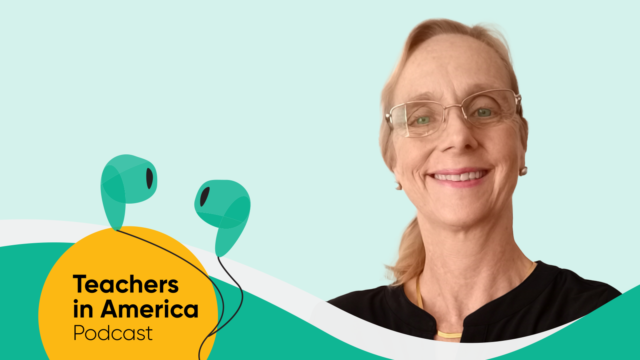
A new way to approach teaching has been stewing in my brain since several weeks ago. I was interviewing Dr. Sheri Mycue, Clinical Assistant Professor in the Department of Curriculum and Instruction at the University of Texas, and she talked about her stressors as a teacher.
The first was a lack of time. Can’t we all relate to that one? She also shared with me some of her favorite lessons: social studies gallery walks, working with globes, doing experiments. Then she explained how she wished that schools were structured so that social studies and science were viewed as the foundations of curriculum, and math and reading were integrated as tools for learning.
What If Things Were Different?
If we look at how skills are acquired outside of the classroom, the process is very distinct. If I want to teach someone how to bake beautiful wedding cakes, we don’t start by measuring flour accurately over and over again, first one cup, then half a cup, then a one-third a cup, then beating one egg, then separating eggs. Instead, we bake cakes. What if I wanted to teach you to repair cars? Yes, you have to read the manual, but will you practice unscrewing bolts over here, and now tightening them properly, and then once you master that, you can remove alternators? No.
If we are preparing students to use reading and writing as tools for communicating ideas for jobs in science, government, teaching, and engineering, why aren’t we teaching them how to think in those fields with reading and writing as the tools they hone as they learn? When science and social studies are a full-fledged part of the curriculum instead of squeezed into incredibly tight schedules, we can integrate literacy tools, introducing and reinforcing reading skills while the student explores and prepares for authentic experiences. This framework could give us more time to explore fundamental topics fully without sacrificing literacy learning.
Classroom libraries and reading collections have been historically weighted toward the most easily available texts: literary texts. But now, with more access than ever before to interesting science and social studies texts and resources that are diverse and rigorously correlated to standards, we can anchor learning in formerly neglected content while using the literacy methods in a hands-on and meaningful way.

Not only that, but teachers who are well-equipped with the tools to teach literacy have what they need to tackle teaching content in science and social studies.
What a Reverse-Curricular Approach Could Look Like
- Retelling in literacy: Early learners benefit from retelling as evidence of comprehension. The inherent narrative arc in cycles in biology, meteorology, and zoology can be approached the same way as they are in stories. Who isn’t going to be excited about imagining the emergence of a butterfly from the chrysalis or the superhero who is a plant bursting from the seed? And with exciting activities/experiments associated with the book, the stories come to life!
- Context clues/comprehension: Teaching how to decode context clues for comprehension during read-alouds and small-group reading is just as necessary for storybooks as scientific texts. Scientific terms lend themselves to being interpreted in concrete and unambiguous ways. Having robust, content-rich books allows you to engage in literacy blocks that interest students as they speculate on what the scientific terms mean. An added bonus: They see root words and prefixes in action, and the building blocks of vocabulary are built.
- Predictions: Making predictions based on titles, pictures, and the student’s own background knowledge is a powerful tool. Rich social studies texts allow students to tap into their own shared humanity and experiences to predict outcomes, which we as teachers may be familiar with, and to empathize and find their place in the world. Exploring the evidence in an event like the Boston Tea Party can lead to students imaging interesting outcomes: What would a student do in the same proverbial boat? And what would happen now if the same events took place? Suddenly, the immediacy of the lesson is palpable.
And the list goes on. A recent study found that if science was described in terms of actions instead of identities ("Let’s do this experiment!" instead of "Let’s be scientists!"), girls were more persistent in their science engagement. If we can tell our students, “Let’s do science" (or sociology or government), instead of "Let’s be readers," maybe we can help our students overcome the identity barriers they have in becoming readers, and they can become the scientists, elected officials, nurses, and teachers who save our world.
***
Want to learn more about integrating literacy across disciplines like social studies and science? View this recording of a free webinar hosted by Noelle Morris, HMH’s Director of Professional Events, whose career in teaching and education consulting spans more than two decades.
Related Reading
















